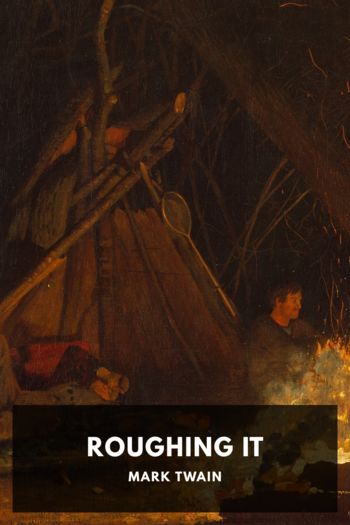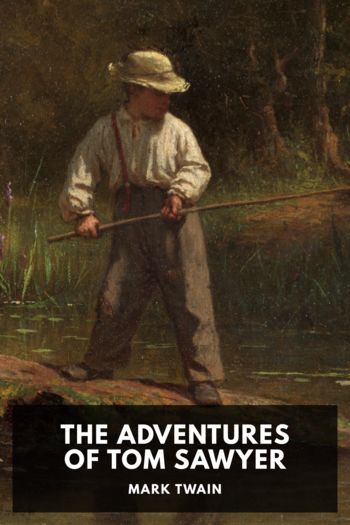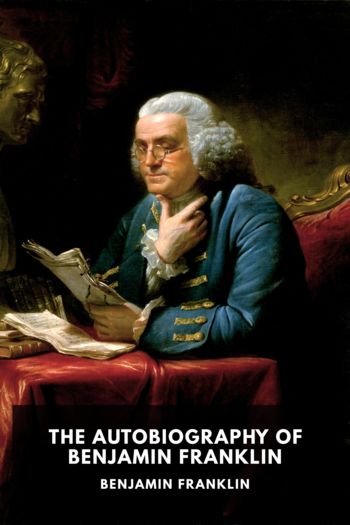The Autobiography of Mark Twain, Mark Twain [good summer reads .TXT] 📗

- Author: Mark Twain
Book online «The Autobiography of Mark Twain, Mark Twain [good summer reads .TXT] 📗». Author Mark Twain
Another schoolmate was John Meredith, a boy of a quite uncommonly sweet and gentle disposition. He grew up, and when the Civil War broke out he became a sort of guerrilla chief on the Confederate side, and I was told that in his raids upon Union families in the country parts of Monroe County—in earlier times the friends and familiars of his father—he was remorseless in his devastations and sheddings of blood. It seems almost incredible that this could have been that gentle comrade of my school days; yet it can be true, for Robespierre when he was young was like that. John has been in his grave many and many a year.
Will Bowen was another schoolmate, and so was his brother, Sam, who was his junior by a couple of years. Before the Civil War broke out both became St. Louis and New Orleans pilots. While Sam was still very young he had a curious adventure. He fell in love with a girl of sixteen, only child of a very wealthy German brewer. He wanted to marry her, but he and she both thought that the papa would not only not consent, but would shut his door against Sam. The old man was not so disposed, but they were not aware of that. He had his eye upon them, and it was not a hostile eye. That indiscreet young couple got to living together surreptitiously. Before long the old man died. When the will was examined it was found that he had left the whole of his wealth to Mrs. Samuel A. Bowen. Then the poor things made another mistake. They rushed down to the French suburb, Carondelet, and got a magistrate to marry them and date the marriage back a few months. The old brewer had some nieces and nephews and cousins, and different kinds of assets of that sort, and they traced out the fraud and proved it and got the property. This left Sam with a girl wife on his hands and the necessity of earning a living for her at the pilot wheel. After a few years Sam and another pilot were bringing a boat up from New Orleans when the yellow fever broke out among the few passengers and the crew. Both pilots were stricken with it and there was nobody to take their place at the wheel. The boat was landed at the head of Island 82 to wait for succor. Death came swiftly to both pilots—and there they lie buried, unless the river has cut the graves away and washed the bones into the stream, a thing which has probably happened long ago.
Monday, March 12, 1906Mr. Clemens comments on the killing of six hundred Moros—men, women and children—in a crater bowl near Jolo in the Philippines—our troops commanded by General Wood—Contrasts this “battle” with various other details of our military history—The newspapers’ attitude toward the announcements—The President’s message of congratulation.
We will stop talking about my schoolmates of sixty years ago, for the present, and return to them later. They strongly interest me, and I am not going to leave them alone permanently. Strong as that interest is, it is for the moment pushed out of the way by an incident of today, which is still stronger. This incident burst upon the world last Friday in an official cablegram from the commander of our forces in the Philippines to our government at Washington. The substance of it was as follows:
A tribe of Moros, dark-skinned savages, had fortified themselves in the bowl of an extinct crater not many miles from Jolo; and as they were hostiles, and bitter against us because we have been trying for eight years to take their liberties away from them, their presence in that position was a menace. Our commander, Gen. Leonard Wood, ordered a reconnaissance. It was found that the Moros numbered six hundred, counting women and children; that their crater bowl was in the summit of a peak or mountain twenty-two hundred feet above sea level, and very difficult of access for Christian troops and artillery. Then General Wood ordered a surprise, and went along himself to see the order carried out. Our troops climbed the heights by devious and difficult trails, and even took some artillery with them. The kind of artillery is not specified, but in one place it was hoisted up a sharp acclivity by tackle a distance of some three hundred feet. Arrived at the rim of the crater, the battle began. Our soldiers numbered five hundred and forty. They were assisted by auxiliaries consisting of a detachment of native constabulary in our pay—their numbers not given—and by a naval detachment, whose numbers are not stated. But apparently the contending parties were about equal as to number—six hundred men on our side, on the edge of the bowl; six hundred men, women, and children in the bottom of the bowl. Depth of the bowl, 50 feet.
General Wood’s order was, “Kill or capture the six hundred.”
The battle began—it is officially called by that name—our forces firing down into the crater with their artillery and their deadly small arms of precision; the savages furiously returning the fire, probably with brickbats—though this is merely a surmise of mine, as the weapons used by the savages are not nominated in the cablegram. Heretofore the Moros have used knives and clubs mainly; also ineffectual trade-muskets when they had any.
The official report stated that the battle was fought with prodigious energy on both sides during a day and a half, and that it ended with a complete victory for the American arms. The completeness of the victory is established by this fact: that of the six hundred Moros not one was left alive. The brilliancy of the victory is established by this other fact, to wit: that of our six hundred heroes





Comments (0)